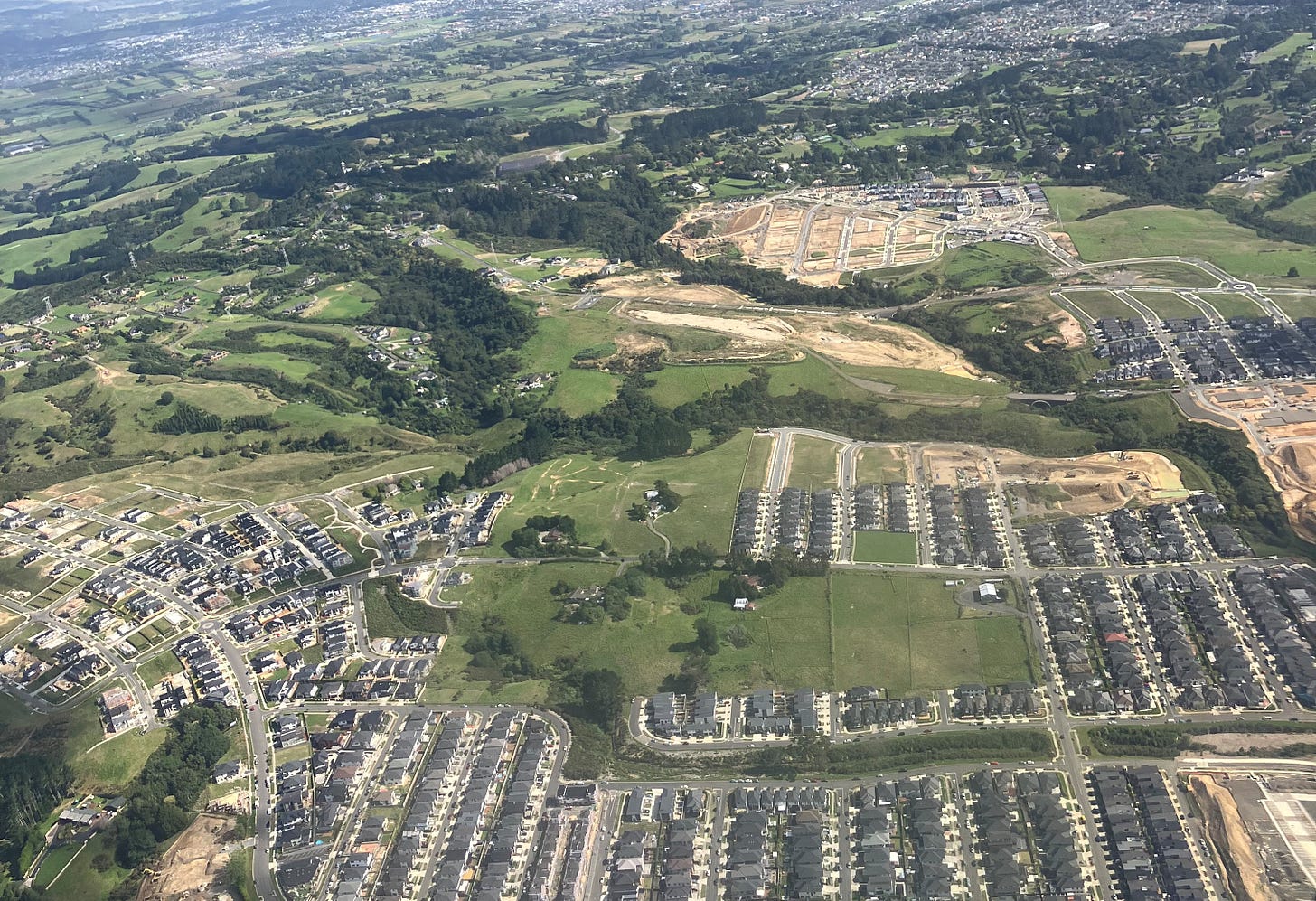Can we afford greenfield growth in our cities?
Aotearoa continues to face a housing crisis due to a lack of housing supply, low-quality housing stock and more recently with extreme weather events leaving some existing housing stock requiring complete rebuild or significant repairs.
Greenfield growth is often touted as the solution housing supply. However, greenfield growth typically contributes more growth emissions from transport than brownfield development within the existing urban area. This is because by locating on the fringe of the city, residents are required to drive further to access employment, education and other opportunities and daily needs. Brownfield development also as lower infrastructure costs per unit.
Transport makes up 39% of total domestic CO2 emissions and we must shift to a low carbon transport to meet our emissions reduction goals.
Existing zoning of rural land for future growth under many district plans would make a ban on future greenfield development tricky. It would also rightly face criticism for reducing housing choice. However, the question we need to answer is: can we afford to invest in and subsidise greenfield growth? From both a financial and emissions reduction perspective, the answer is no.
Financial
The growth in Drury in South Auckland is a great case study of conflict we have with public funding for greenfield development and our emissions reduction goals.
In Drury, Auckland Council plans to deliver $2.869 billion of arterial roads, strategic collector roads, parks and community facilities of which $1.475 billion is intended to come general rates. This subsidises greenfield home buyers and growth in emissions, while increasing future infrastructure maintenance requirements and debt for the city as a whole.
To help pay for infrastructure, Auckland Council is considering a new Development Contributions policy, to increase the average contribution required per new household in the area to increase the current rate is $22,564 per household equivalent unit to $83,251. Despite this significant increase, it would still only cover $1.394 billion (49%) of the planned infrastructure investment.
Reversing this maths, indicates the overall cost per unit including contributions is around $170,000, meaning contributions of $83,251 would still leave a gap requiring public investment of more than $80,000 per unit. It was expected to cost $140,000 per residential unit as of 2018. Since then, we have seen significant inflation in the construction industry, most notably with the blowout of the NZ Upgrade Programme in 2021, so this increased cost per unit matches that of what we have seen elsewhere in construction.
It’s notable that the infrastructure investment above excludes the hundreds of millions being invested in state highway upgrades and the upgrade, electrification of the rail line alongside new stations. The latter of which does support lower carbon transport options for the growth in Drury but equally encourages growth in the area. Furthermore, there is a significant opportunity cost as the investment could have supported more homes and lower emissions in brownfield development at a lower infrastructure cost per unit.
Emissions
Given the requirements to rapidly reduce emissions from transport, whether we can afford greenfield growth it is not just a financial question but an emissions reduction one. As well as the growth in emissions from transport that greenfield growth creates, there is significant embodied emissions in the land and infrastructure development process. The time pressure to reduce emissions to mitigate the worst scenarios, and finite resources, means greenfield growth decisions and funding should face greater scrutiny. Delaying most planned greenfield growth to the 2040s or 2050s, is likely to be key in reducing emissions from transport.
Simply shifting public funding away from greenfield growth and instead prioritising infrastructure which supports urban intensification, can provide a strong price signal to the market. By removing this subsidy, the quantity of housing demanded (at the market rate) is lessened in greenfield areas, as the cost of new housing would reflect the full infrastructure costs of per unit.
Not taking this approach will commit hundreds of millions to subsidising growth in emissions from transport, making achieving our goals of reducing emissions even tougher to achieve. This is not something we can afford to do.





